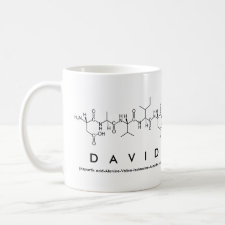
Authors: Horemans F, Weustenraed A, Spivak D, Cleij TJ
Article Title: Towards water compatible MIPs for sensing in aqueous media.
Publication date: 2012
Journal: Journal of Molecular Recognition
Volume: 25
Issue: (6)
Page numbers: 344-351.
DOI: 10.1002/jmr.2191
Abstract: When synthesizing molecularly imprinted polymers (MIPs), a few fundamental principles should be kept in mind. There is a strong correlation between porogen polarity, MIP microenvironment polarity and the imprinting effect itself. The combination of these parameters eventually determines the overall binding behavior of a MIP in a given solvent. In addition, it is shown that MIP binding is strongly influenced by the polarity of the rebinding solvent. Because the use of MIPs in biomedical environments is of considerable interest, it is important that these MIPs perform well in aqueous media. In this article, various approaches are explored towards a water compatible MIP for the target molecule l-nicotine. To this end, the imprinting effect together with the MIP matrix polarity is fine-tuned during MIP synthesis. The binding behavior of the resulting MIPs is evaluated by performing batch rebinding experiments that makes it possible to select the most suitable MIP/non-imprinted polymer couple for future application in aqueous environments. One method to achieve improved compatibility with water is referred to as porogen tuning, in which porogens of varying polarities are used. It is demonstrated that, especially when multiple porogens are mixed, this approach can lead to superior performance in aqueous environments. Another method involves the incorporation of polar or non-polar comonomers in the MIP matrix. It is shown that by carefully selecting these monomers, it is also possible to obtain MIPs, which can selectively bind their target in water. Copyright © 2012 John Wiley & Sons, Ltd
Template and target information: l-nicotine, nicotine
Author keywords: molecular imprinting, water compatibility, L-nicotine, porogen tuning, Biosensors



Join the Society for Molecular Imprinting

New items RSS feed
Sign-up for e-mail updates:
Choose between receiving an occasional newsletter or more frequent e-mail alerts.
Click here to go to the sign-up page.
Is your name elemental or peptidic? Enter your name and find out by clicking either of the buttons below!
Other products you may like:
 MIPdatabase
MIPdatabase









